have you now or have you ever

In April, I was asked to speak a class of museum studies students at the University of San Francisco. Apparently there is still interest, after all these years, in hearing about The Pen. As it happens I had recently done a internal presentation at work about The Pen. I used that presentation as the basis for the museum studies class and then extended it further to make the link between some more recent work at SFO Museum to address many of the same basic (ongoing) problems.
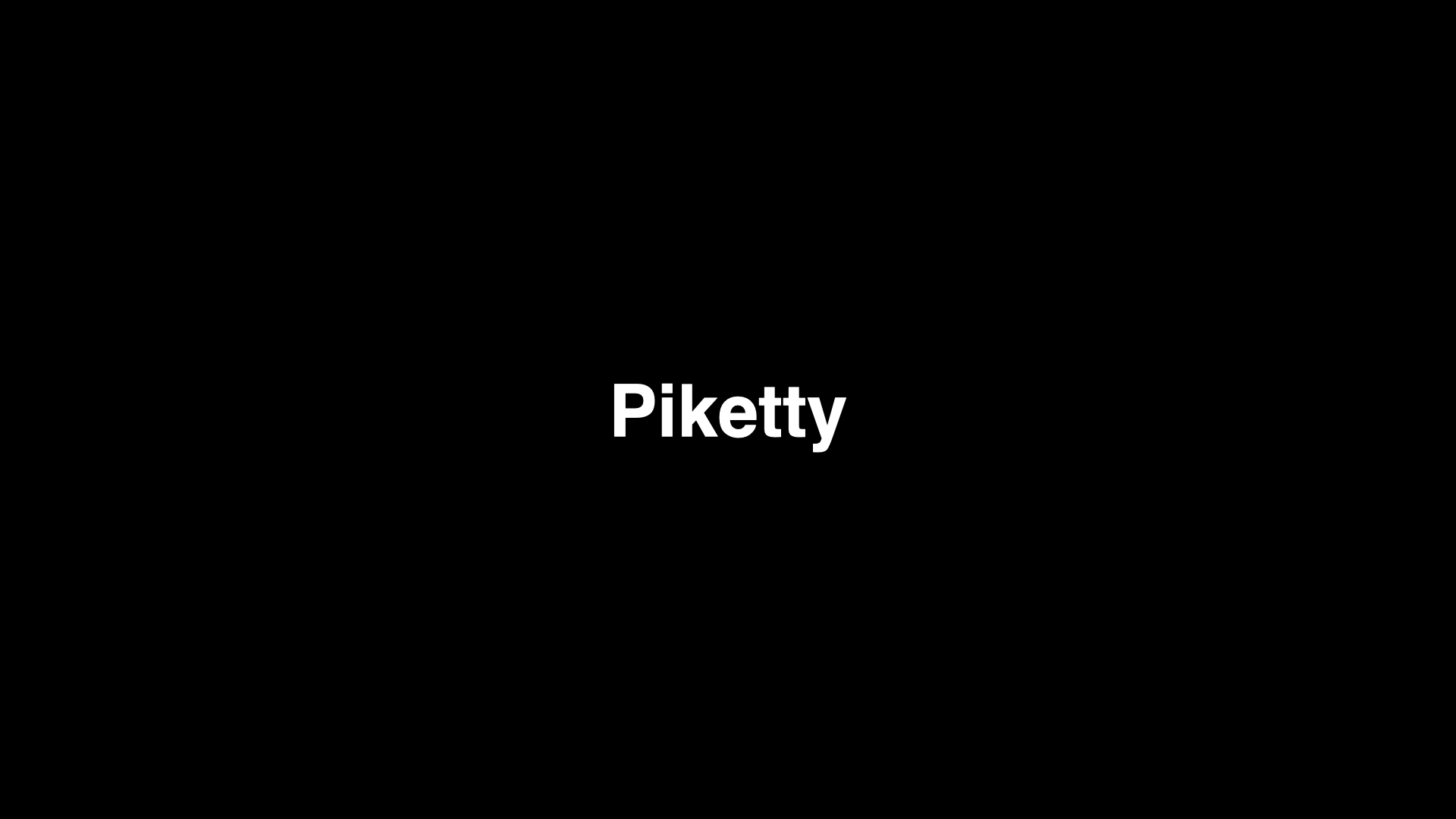
I'd like to start with the French economist Thomas Piketty. In 2013 he published a book titled Capital in the Twenty-First Century. It is a comprehensive study of wealth distribution and inequality since the 1800s. One of the things he notes in the book is that his analysis would not have been possible had the French authorities, following the revolution in 1789, not started keeping comprehensive tax records year over year. Those records had to wait over 200 years before they would be use to support Piketty's argument. Those records did not "go viral" or generate any immediate "reward" after the years in which they were collected.

I wanted to start with Piketty's example because it demonstrates the value of persistance; the value of persisting something beyond the limits of the present's imagination. I wanted to start with this idea of persisting things because one of the genuinely novel things about the moment we are living through is that we have the means to store and to replicate, to persist, data at a scale that has literally never been possible before. Only a very few organizations, like the Catholic Church for example, have had the means to proative actively keep "all the things" for thousands of years. It is now possible for basically everyone else to do the same, or something like it, digitally.
Digital archiving is not a practice without risks or unintended consequences so it remains to be seen whether it has a thousand-year lifespan. My point is not that digital storage is the solution to all our problems. My point is only that where before there was only the gaping maw of nothing, of the past being obliterated by the negligence of the present or the malice of the victors or both, now there is something.

In more recent year, that persistance has been coupled with better and better tools for retrieving that data. The past keeps changing
, wrote the historian Margaret MacMillan, because we keep asking questions of it.
The advances in storage and retrieval technologies that we've seen just in our lifetimes are astonishing when compared to how we were able to ask questions of the past before their introduction. Importantly these tools have not only changed how we are able to ask question but who is able to ask them; namely more than the few.

And these changes are what give rise to higher order processes; the applications and functionalities that become possible when fast and cheap storage and retrieval of stuff
can be taken for granted and dissolve in to the background.
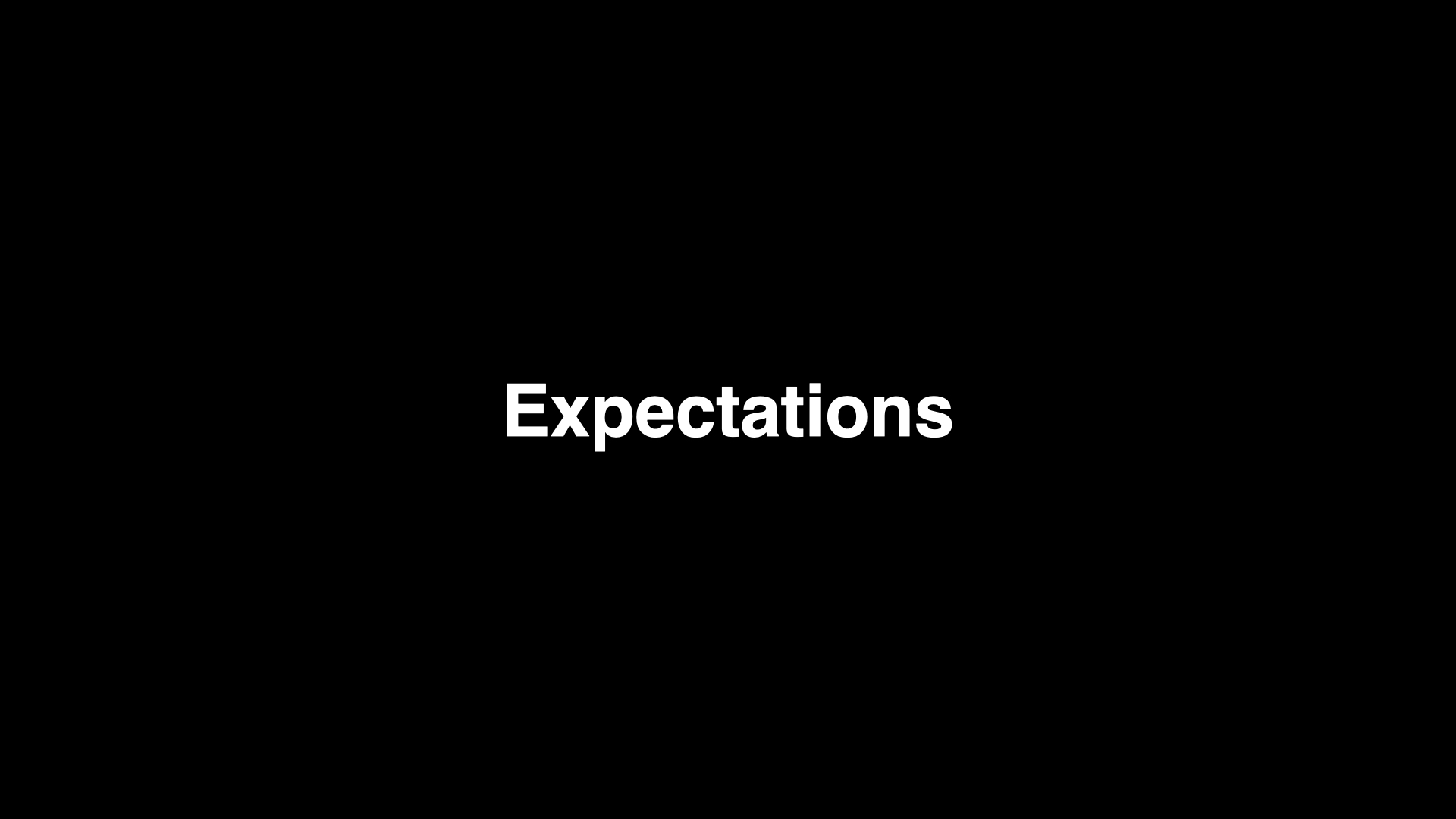
As those higher order processes are normalized they start to be taken for granted and people's baseline expectations begin to change. For example, consider the way people now just assume it's possible to carry a tiny computer in their pocket and use it to connect to other computers thousands of miles away to answer a question or order cat litter. I've just described Wikipedia and Amazon, both of which are underpinned by an enourmous amount of resources devoted to storing and retrieving data.
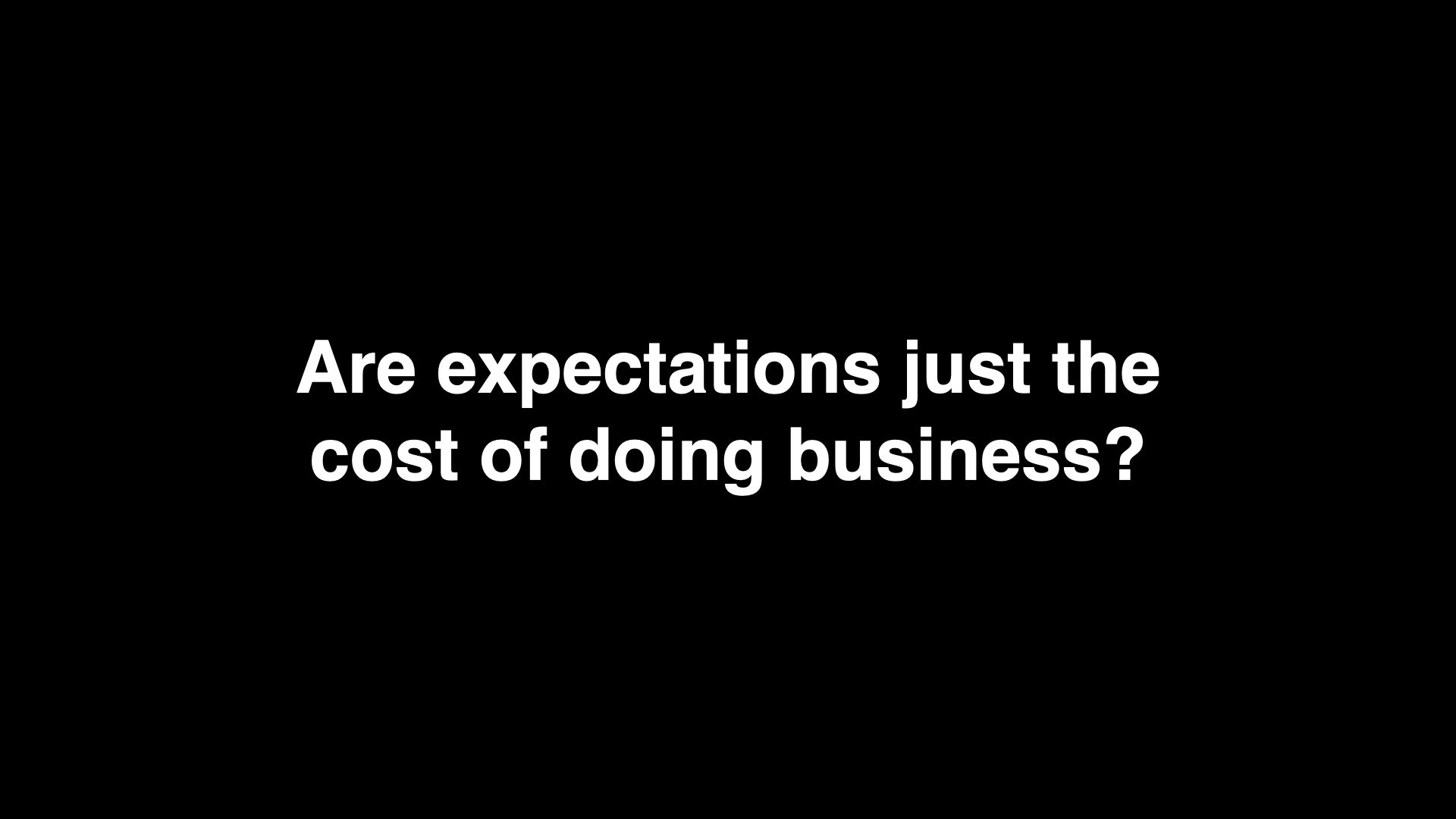
Not infrequently these new found expectations start to impact everything else around them. People start to ask questions like If I can (x with a) then why can't I (y with b)?
These questions sometimes betray a lack of understanding in what it takes to do x
. For example, the ability to ensure that cat litter is only ever a day away from you requires a mind-bogglingly sophisticated global logitics and warehousing infrastructure. But in world that celebrates the commodification of the possible these misunderstandings are not entirely unfair.
One consequence of these misunderstandings is that other people's changing expectations happen to you whether you are ready for them or not. Which raises an interesting question: Are expectations just the cost of doing business?

What I mean by that is does your enterprise aim to meet expectations simply as a way of garnening attention? Are people's changing expectations simply the zeitgeist that you cater to as a way to stay front of mind? The point of asking the question is not to say one approach is inherently better, or worse, than the other.
The point of asking the question is to better expose one's motivations. The reason for doing that, when we talk about museums, is because you just as easily replace the phrase expectations
with digital technologies
and ask the same questions. Is the role of digital technnologies in a museum to serve principally as an attractor, the thing that gets people through the door of an institution, or something else?
Again, there are a range of equally valid answers to that question. The problem I've observed is not that any two museums have different answers but that they are, typically, unable to articulate them in concrete terms. What happens, instead, is that everyone brushes their respective nuances, biases and purposes under a collective rug that we've labeled digital
. The consequence of which is that we all use the same term to speak about radically different things and then wonder why we always seem to be talking at cross purposes.
I want to suggest that perhaps the most important thing you can do now, as people thinking about using the words museum
, professional
and digital
in the same phrase, is to develop a personal understanding of what the point of incorporating digital technologies in to a museum is and then to find the language to express to others what those ideas are and are not. Do this as a favour both to yourselves and to your peers.

The Cooper Hewitt, the Smithsonian's National Design Museum in New York City, is a good study for questions about attractors. The Cooper Hewitt is literally a block away from the Guggenheim but, for many people, it might as well be across the ocean. Here's a visual aid to make the point. The Guggenheim, with its easily recognizable cylindrical building, can be seen in the bottom right of this screenshot. The little binocular icon, floating above the Guggenheim, is pointing at the Cooper Hewitt.
The problem facing the Cooper Hewitt, when it closed its doors for renovations in 2011, was that most people would never walk that extra block to visit the museum. Many didn't even know it was there in the first place. Even if they did what they encountered was a very old and foreboding, mansion. You'd be forgiven for thinking it was the private residence because it was; this was Andrew Carnegie's home. So the problem facing the Cooper Hewitt was that it needed something, an attractor, to help people overcome those barrier of simply walking through the door.

In 2010, the Smithsonian hired Bill Moggridge to be the new director of the Cooper Hewitt. Bill was not a museum professional but rather a life-long designer having, among his many other accomplishments, designed the first laptop computer and helped found the design studio IDEO.
Bill was hired to address the problems I've just described. Bill was hired to help bring the museum in to the digital age
. Whether that phrase enjoyed the clarity of intention I've been arguing for remains unknown but it led Bill to hire Seb Chan to run the newly created Digital and Emerging Media department. In 2012 I would join that team.
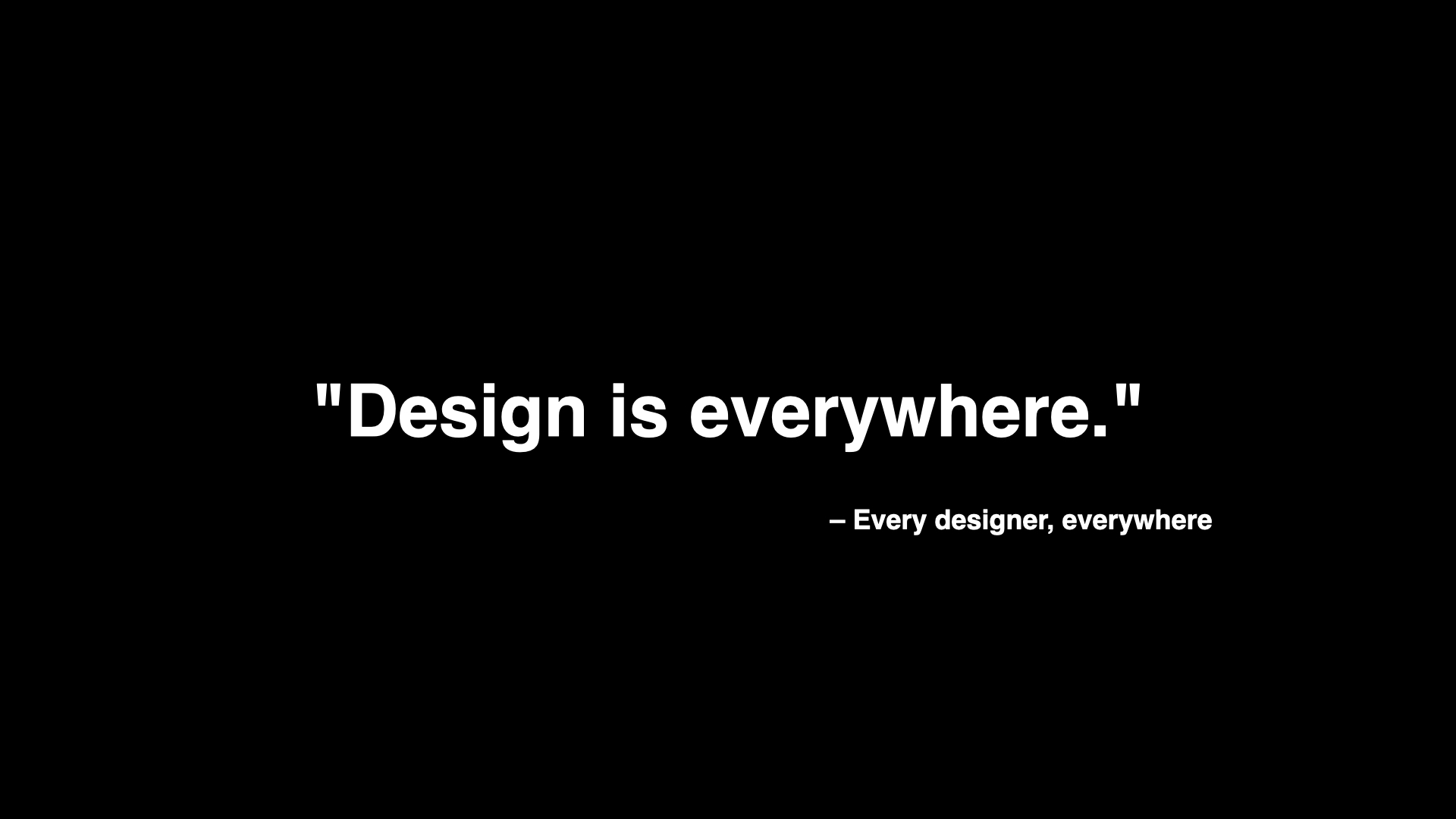
The great luxury that design museums have is that everything, or at least everything made by humans, is designed. Whether people know it or not their use and experience of those things
is directly related to, and reflected in, their design. The challenge for a design museum is to find a way to convey those relationships to people.
In 2011 Fast Company published a profile piece about Bill in which he is quoted as saying:
“The movement in museums that I’ve observed,” he says, “is that it’s an experience where people learn by doing and not just looking. You can’t really do much with treasures that can only be looked at and have to be protected.”
This conversation about doing and not just looking
and about how to manifest that idea in the museum was already in full swing when I arrived.

This is the slide that birthed The Pen.
The pitch was that every every visitor would be given digital stylus upon entry that would both double as their ticket, or proof of purchase, and act as a device to invite visitors to participate in the act of designing. This would be done by prompts to sketch and create objects on interactive tables that would be connected, digitally, to the entirety of the museum's collection. These digital interfaces would connect the objects on display in the galleries to all the other related objects that remained in storage. Importantly the stylus was meant to give visitors license to touch things in the museum. Not the objects themselves but something to break the traditional conveyor belt of passive knowledge consumption that defines so many other museum experiences.
The Pen, it was suggested, could also be used to collect
objects by tapping a wall label and recording that object's unique identifier, using RFID technologies. Visitors could, in effect, bookmark objects they found interesting during a visit and the museum would provides the means by which those bookmarks could be retrieved at a later date. The point was not so much to judge which object's people collected or to dictate what they might do with them so much as to simply provide the means by which they could.
The Pen was meant to offer two sets of interactions: First, it was to be an invitation for visitors to be active participants during their time in the museum by giving them the ability to create their own drawings and sketches in relation to the collection and license to touch the architecture of the museum itself. Second, it not only afforded people the means by which they might catalog, or remember, their visit but encouraged them to do so.
In many ways the first set of interactions, combined with the novelty of the Pen itself, served as the attractor I talked about earlier. The second set of interactions suggested a means by which we might approach some of the broader problems around museum visitation and the relationships people have with our collections.
If the larger goal is to promote and foster a practice of revisiting, which I will argue is the bedrock of the humanties and a celebration of cultural heritage, then digital technologies offer a unique opportunity: To simply be a way in which we might help people to remember their visit to the museum and to use those same tools as a place where the stories and anecdotes that define the objects we collect might also be shared.
We used to ask people whether they have had ever taken pictures of wall labels during a visit to a museum. Most people, even people who were not museum professionals, said yes. When asked whether they ever did anything with those pictures they all said No
.
What if, we asked, you never had to worry about taking a picture of a wall label again? What if, instead, the museum itself stored a record of your interest in an object and provided the means to retrieve it at some later date? What are the higher order processes
, akin to the Wikipedias and Amazons I talked about earlier, that might be possible once remembering a visit to the museum could be taken for granted?
This is a video we made to demonstrate these ideas internally. It was filmed using a commercially available device, developed for inventory tracking. In the beginning we imagined it might be possible to take an existing off-the-shelf solution for recording objects using NFC tags and retrofit it to our needs.
This was not the case as it turned out.

It took a lot of work, a lot of help from friends of the Museum and more-than-lunch-money from Bloomberg Philanthropies to turn that initial concept slide in to the finished product you see here.
I suppose that's the bad news: It was really, really hard to make the Pen come to fruition. Hard in a way that some people still don't think was worth the effort. The good news is: It is possible to design and manufacture bespoke and sophisticated electronic hardware purpose-fit for a museum environment. I still find that exciting because it makes real the question: If this is possible what else could we do?
I also thought it was an important process for a design museum to experiece. To live the challenges and setbacks of taking the sketch of an idea and seeing it through to completion, through all the different economic and material considerations and the many actors that are necessary to mass-produce consumer products. That practice is the business
of a design museum and what better way to help understand and convey its many nuances and complexities than by doing it ourselves?
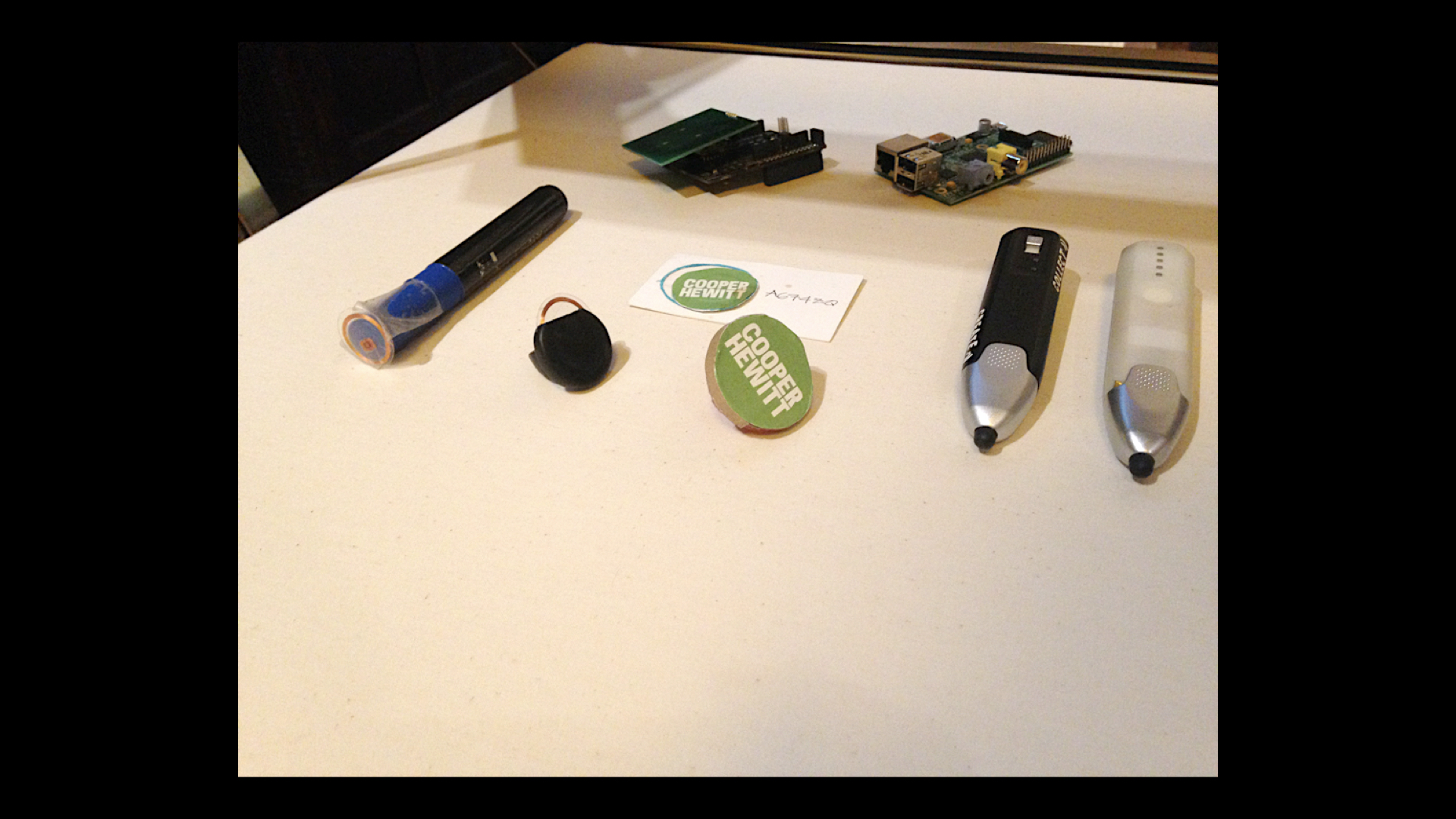
These are some of the prototypes we worked on in between the initial concept and the finished product. You can see the device we used for the initial concept video on the right. The company that made those devices was contracted to design and manufacture the electronics for the Pen.

These are some other prototypes that show the iterations we went through as we approached the finished design.
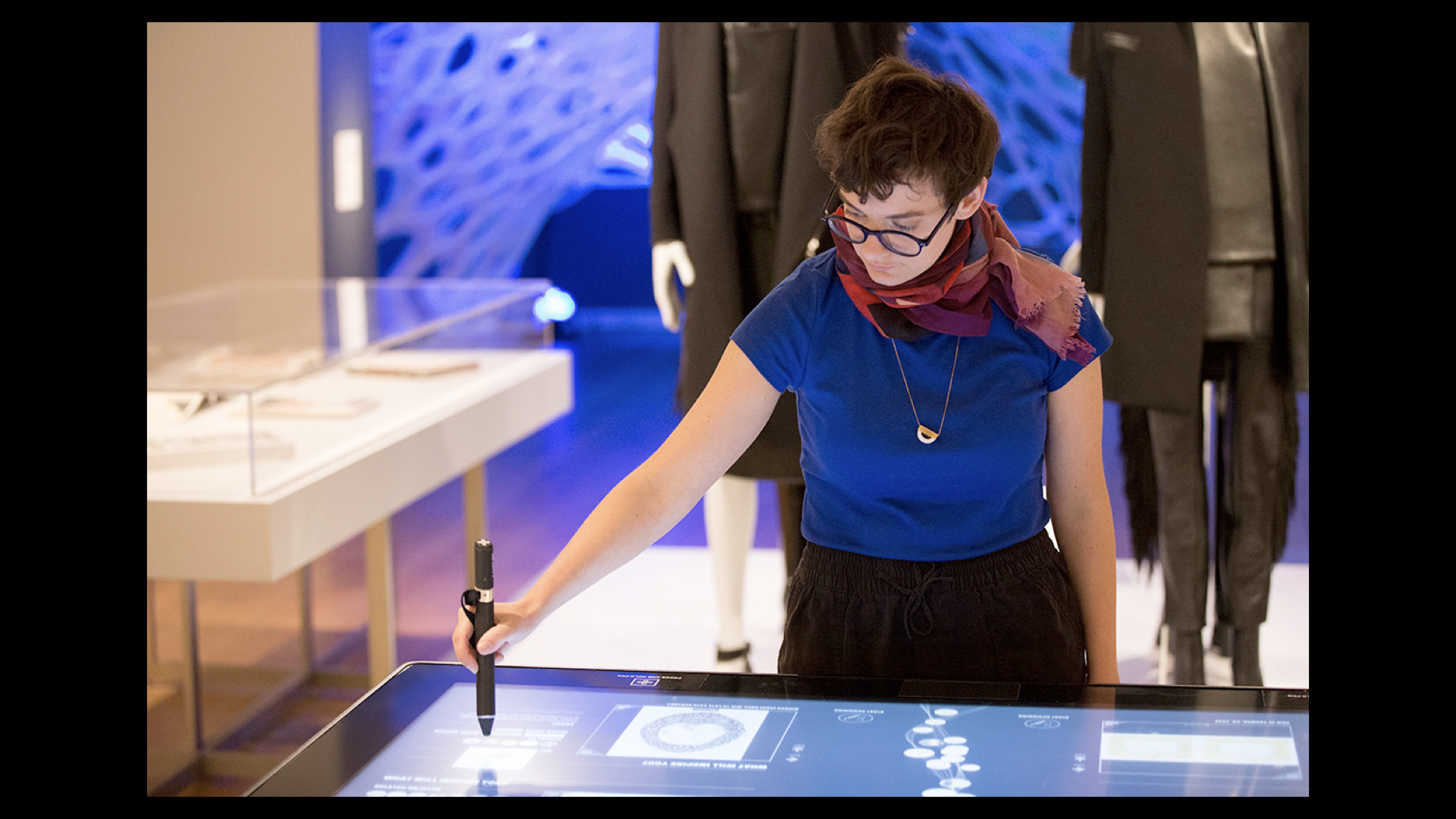
Here's what the Pen and the interactive tables looked like in the galleries.
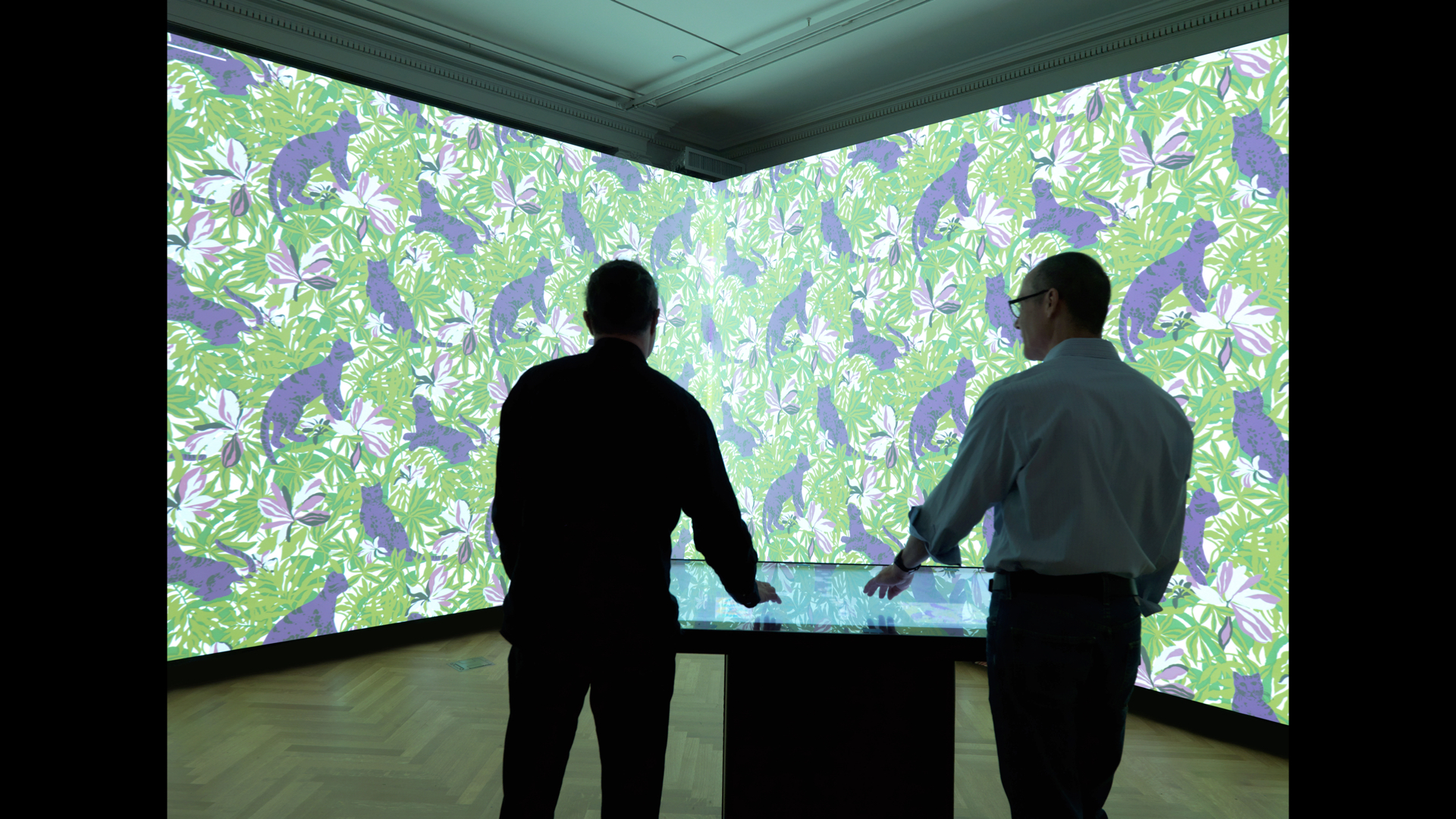
This is another one of the interactive tables in what is known as the wallpaper room
. Projectors mounted on the ceiling allow the museum to display wallpaper and other wall-coverings from its collection as if in real life, namely at the scale of an entire room. Normally the Cooper Hewitt only collects smaller samples of wallpaper but even if the museum had acquired rolls and rolls of these designs it doesn't have enough physical space to show them, let along store them.
The wallpaper room is amazing and it's a good illustration of the kind of thing thing that would otherwise be impossible in a museum before the advent of digital technologies. The wallpaper room doesn't replace, or supersede the value of, the original swatches but it does do something those swatches can't do on their own.
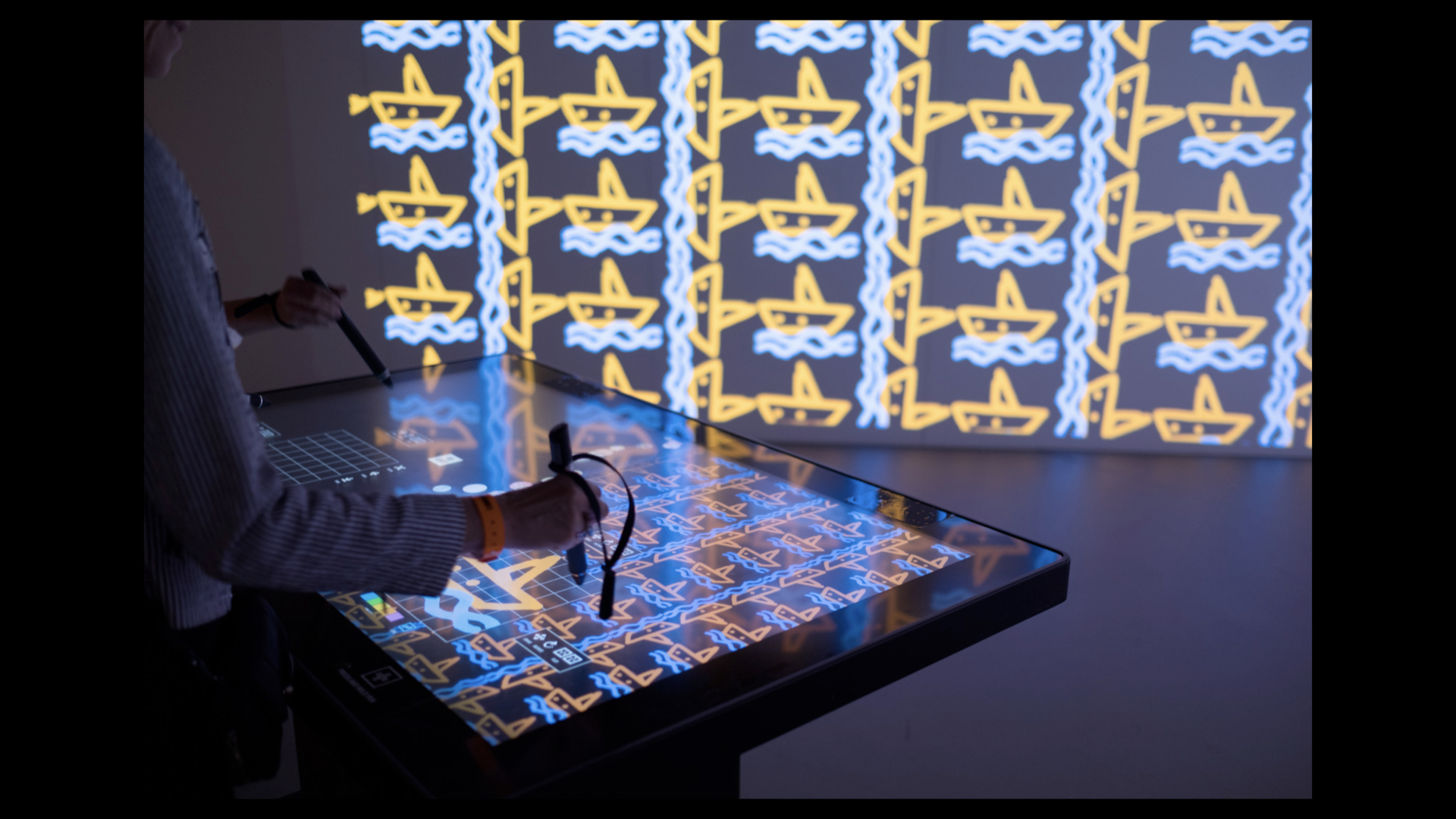
The wallpaper room was also designed to allow visitors to draw their own patterns and project them on the walls. Visitors could them save these designs to their visit the same way they could collect objects in the galleries.

This is what the galleries looked like where every object listed on a wall label also had a target, the little cross in the top right-hand corner, with an embedded NFC tag containing that object's unique ID. Those IDs had a one-to-one mapping to the webpage for that object on the Cooper Hewitt collection website.
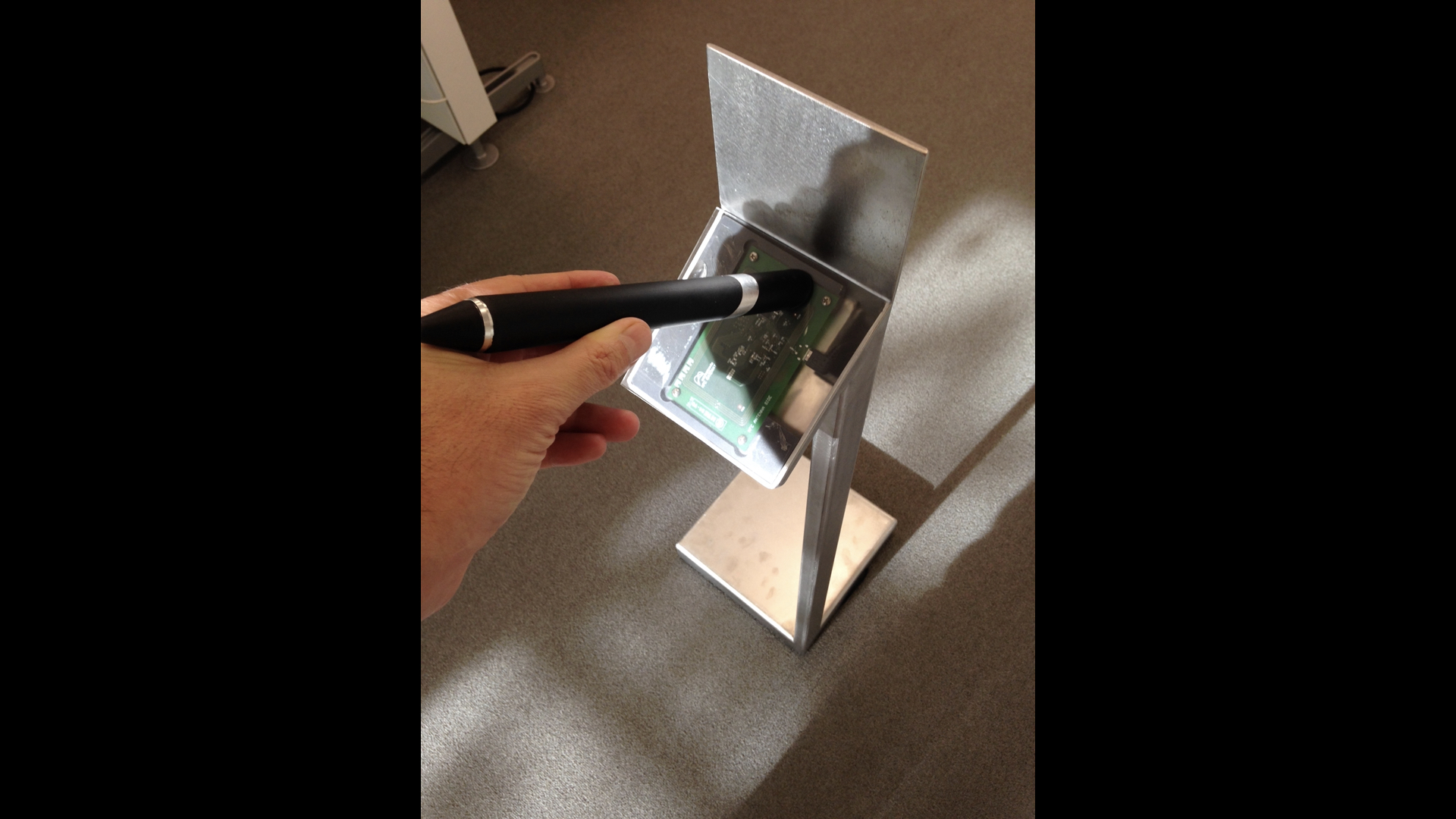
This is a development photo of one of the docking
stations for the Pen. The Pen was developed with a number of material and financial constraints which meant that although it could save objects a visitor collected it didn't have the means to send them anywhere. The Pen does not have wireless or internet capabilities and this meant that objects you collected had to be dumped
using one of these stations or an interactive table. I'll come back to this in a minute.

This is a high-level breakdown of the different layers, or separation of concerns, required to design and produce hardware.

These are the principal actors responsible for each of those layers. The Cooper Hewitt did not build the Pen alone and it would not have happened except for the hard work and good will of these organizations.
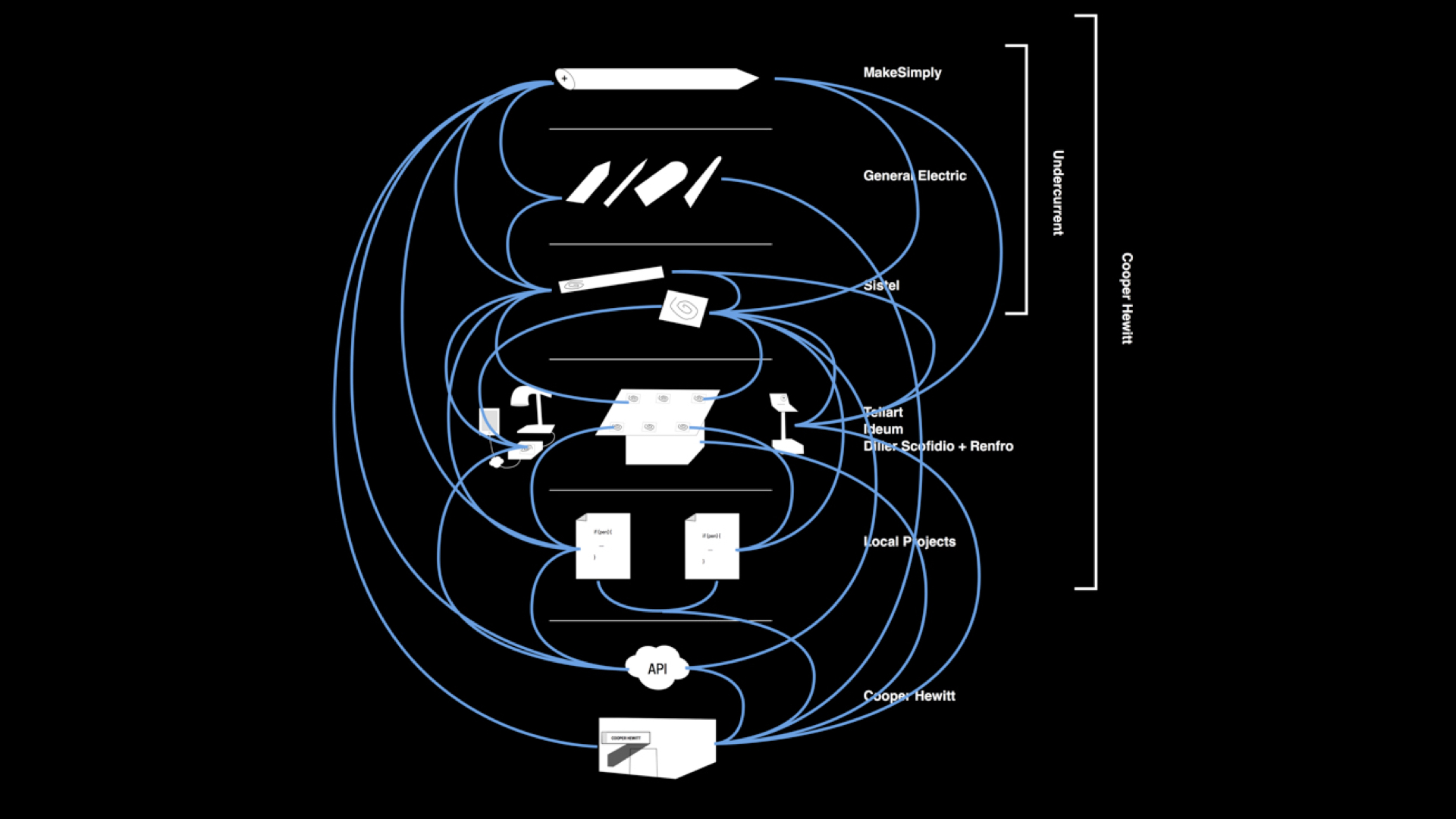
This is an illustration of how all those organizations, and the individual components they were responsible for, interacted. In the end the Cooper Hewitt ended up being its own general contractor
for this project. It was, as I said, a very very hard project.
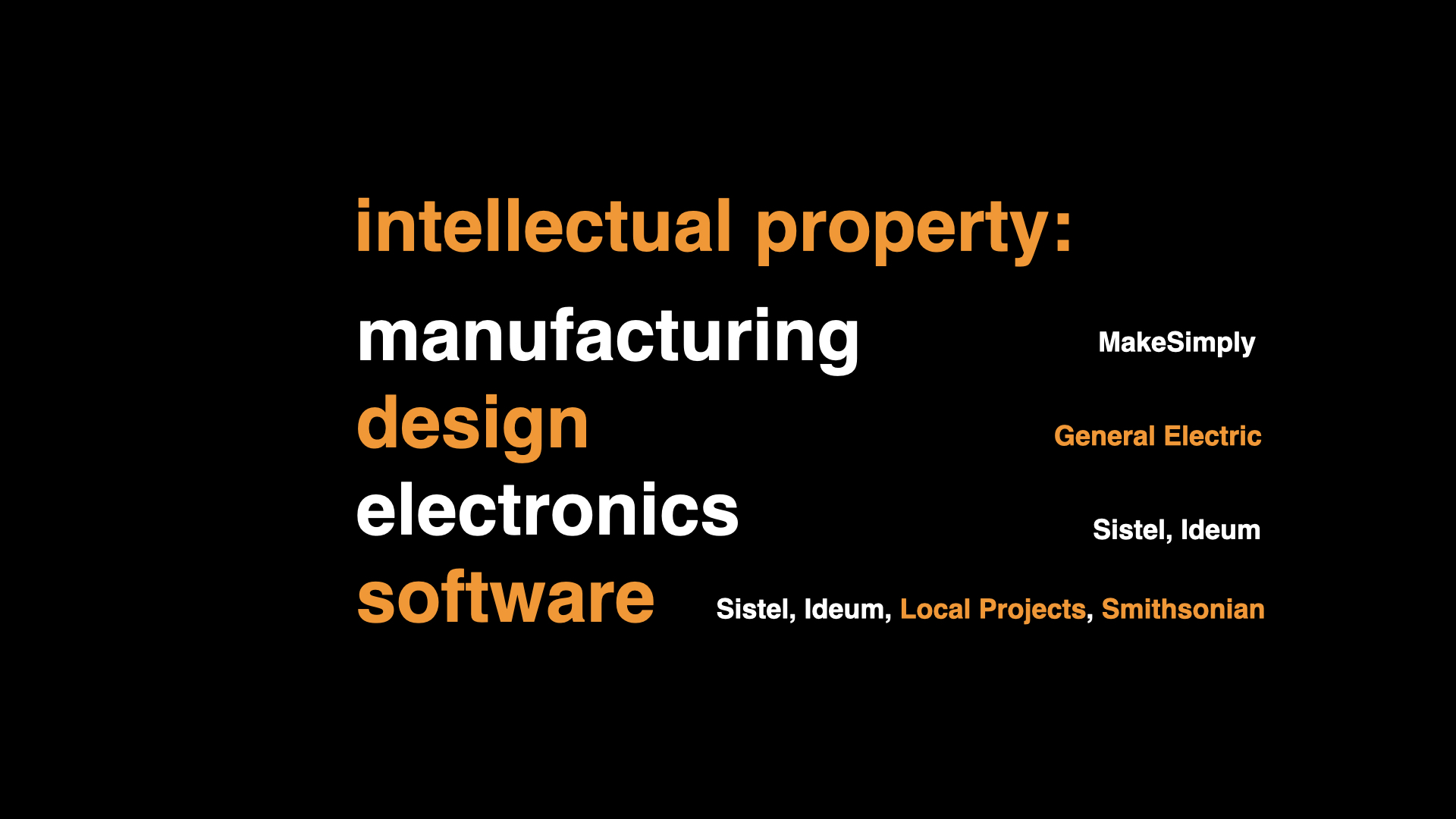
There are many things about the way we got the Pen from concept to finished product that I would not recommend. The Cooper Hewitt was operating within a set of circumstances which dictated some of the choices we made and how they were implemented but there are better ways to accomplish the same results.
One thing we did right, however, was to explicitly retain the intellectual property rights on key components of the Pen. We retained the rights the physical design and the interaction design of the Pen, originally developed by General Electric. We also retained the rights to the software used in the interactive tables, developed by Local Projects.

These were very deliberate choices made to foster conditions, inside the museum, where the problems these tools were meant to solve might be revisited.
What I mean by that is that we, those of us working to bring the Pen to life, always saw it as a first iteration. It was important to try and build things in such a way that an iterative process to refine and improve the Pen was feasible within the economic and scheduling demands of the museum.
It's worth pausing here to acknowlegde that what I've just described, not only developing and launching a major initiative like the Pen but then continuing to revisit and potentially alter that work, rarely happens in the cultural heritage sector. I want to acknowlegde that only to acknowledge that it was a motivating decision that, with hindsight, we did a poor job of conveying to others and was the source of some anxiety after the Pen launched.

This is a 2022 screenshot for the Adafruit Feather HUZZAH microcontroller. This is a microcontroller with 4MB of RAM and a built-in wireless chip that costs less that 17$. It is as you can see about as wide as a quarter. I think that's pretty amazing.
This microcontroller is still not suitable as a drop-in replacement for the circuit boards that were developed for the Pen in 2014; it would need to be about two-thirds as wide and be powered by triple-A batteries. On the other hand if I were developing, or iterating on, the Pen today Adafruit would be the first people I would call to see if we could work out the economics of those challenges.
This circuitboard is orders of magnitude more powerful and, importantly, cheaper than the circuitboard the Pen launched with. We understood this when we were designing the Pen and we always imagined that some day we could replace the original circuitboards with newer improved boards without having the replace the Pen itself. The Pen would continue to work as it always had in the galleries except that version two
, so to speak, might have a connection to the internet allowing objects collected to be associated with a person's visit automatically without the need to use a docking station or an interactive table.
Do you remember the picture of the docker station from earlier? Those were only necessary to account for the realities of developing hardware in 2014. The goal was always to remove those stations as network-enable electronics got smaller and cheaper, allowing us to improve the Pen rather than replacing it wholesale.
Adafruit has published a really great history of the Feather boards, describing how it was first created and how it has continued to evolve since then. There are lessons here that I think all museums could learn from.
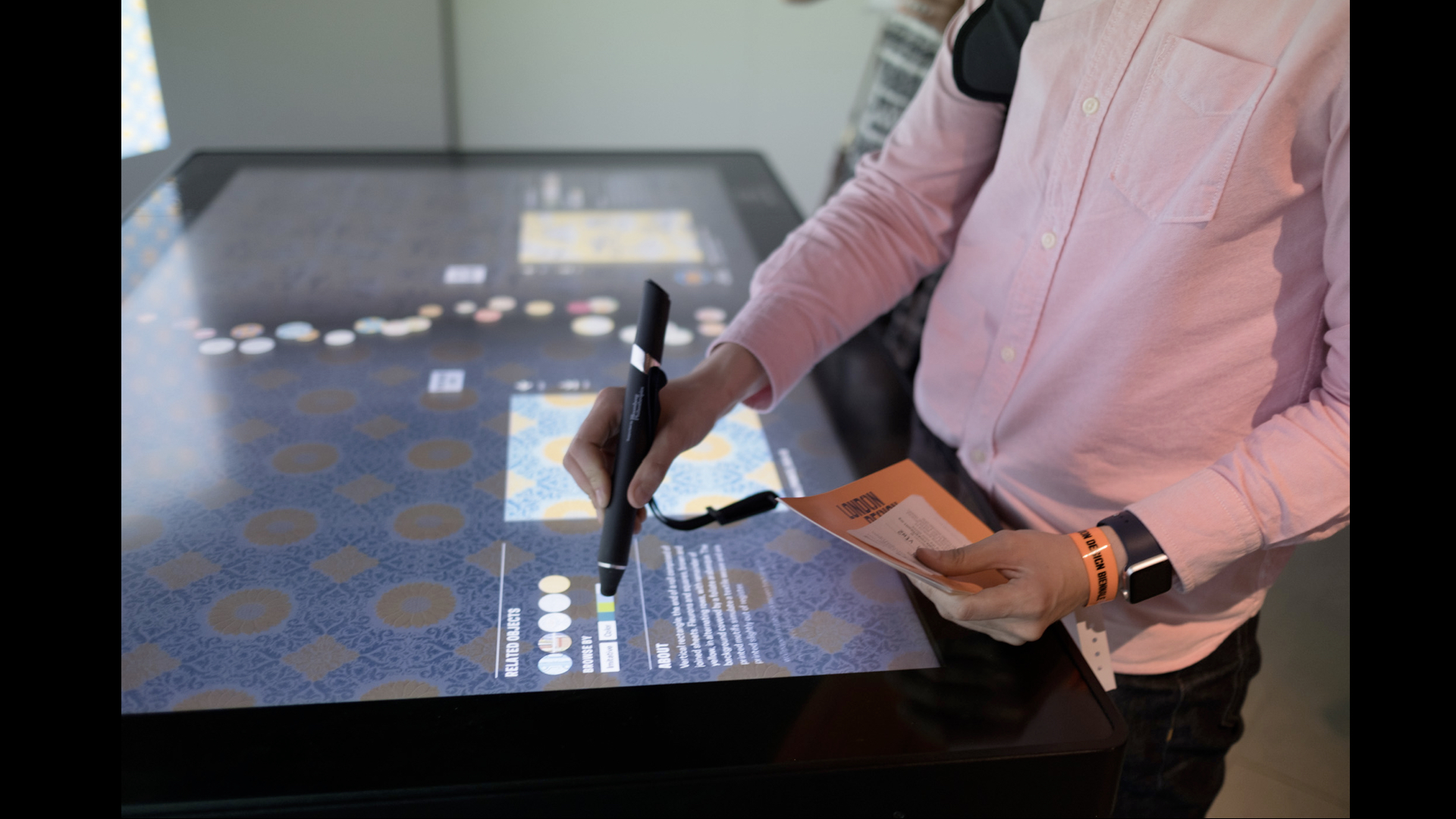
In the immediate years after the Pen launched Cooper Hewitt had success iterating on and improving the digital infrastructure it had built for the museum's reopening. In 2016 it traveled both the Pen and the interactive tables to the London Biennale. In order to do this the digital team had to retrofit code it had written internally as well as code that Local Projects had written. The team created an equivalent white box
implementation of nearly all the interactive experiences in the Cooper Hewitt's own galleries which they could take to London.
The team took a complex hardware and software ecosystem that was purpose-built for the Cooper Hewitt and its technology infrastructure and adapted it for use in an entirely different environment. They did all of this work in-house and on staff time. When I talked about creating conditions where problems may be revisited
this is the kind of example I am talking about.

As part of traveling the Pen to London many of the interfaces, both public-facing and staff-specific, were revisited. Entirely new tools for visitor services to hand out pens and to associate them with tickets were written by a third-party developer on top of Cooper Hewitt's programtic interfaces for the Pen-related activities.

The digital team at Cooper Hewitt started to experiment with new interactive installations that wouldn't have been possible before the Pen. I want to stress, again, that just as important as the work of imagining and creating new interfaces was the fact that this work could be accomplished on staff time and within the boundaries of people's already busy schedules. Projects like this one did not require a new round of capital funding, or requests for proposals or the protracted timelines of so many vendor-driven solutions.

Before I left the museum in 2015 we also started experimenting with allowing visitors to collect items for sale in the shop. It seemed only logical that at a design museum where many of the objects in the exhibitions were also available for sale, for example this chair by Thomas Heatherwick, that the same interaction affordances be available. We also started letting people collect the short essays on the wall that accompany exhibitions and had plans to do the same for individual architectural elements in the museum building. We even talked about letting people collect the plants and flowers on display in the museum garden.
Some of these ideas were better, or more successful, than others. The important point is that they were all made possible, faster and cheaper, by the Pen. Without the Pen and the infrastructure to support it many of these ideas would have been too risky, too time-consuming or too expensive to pursue. The Pen not only made them possible but made them possible in a way that allowed some of the more experimental projects to be worth investigating even if they fell short in practice.
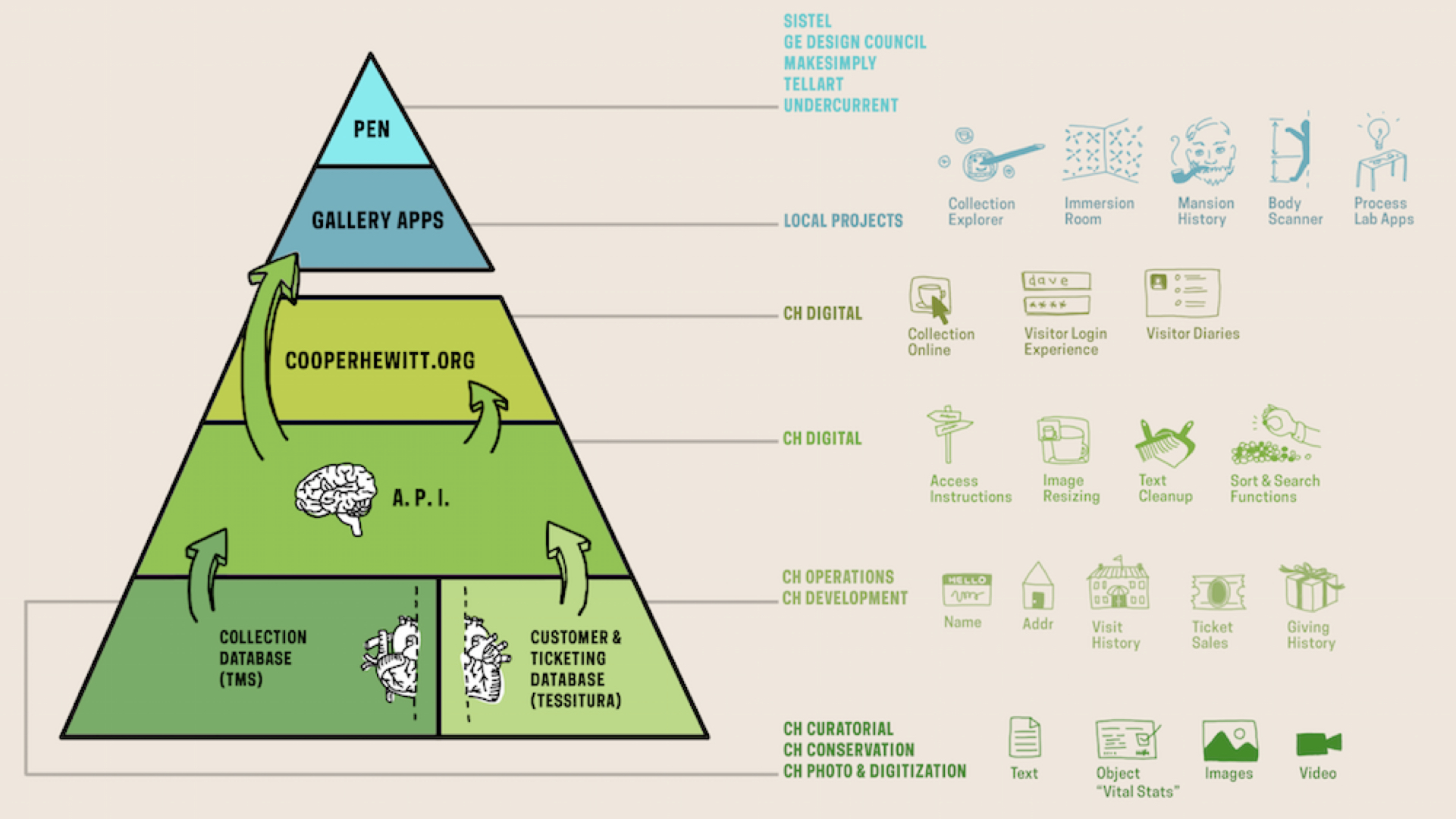
This is a diagram, made by Katie Shelley, illustrating how all the digital systems at the Cooper Hewitt fit together. So far, nearly everything I've been talking about has been the smaller triangle at the very top of the larger pyramid. The museums collection and the database of people who have some involvement with the museum (visitors, donors, patrons) are the base of the triangle; the foundation on which everything else rests. Just above that sits the API
which was the short-hand we used to describe the layer of software and services that handled the basic operations around storage and retrieval for objects in the collection and the individuals who interacted with them.
The first layer of the pyramid is what makes everything possible. The second layer, the API
, is the means by which that possible is accomplished. Everything else is a so-called higher order process
.

Here's another illustration that Katie made to visualize how everything was meant to fit together. In 2015 this was, in fact, the minimum number of steps required to implement what was effectively a physical bookmarking system in a museum.
In 2022 it is possible to imagine removing at least one step – having to retrieve objects from a Pen at the end of a visit, as shown in the bottom left-hand corner – by adding wireless network connectivity to the Pen itself. It hasn't happened and I don't think it ever will but this was always the plan.

I started out by talking about expectations and the idea that sometimes expectations happen to you
. Sometimes other people's expectations arrive unannounced and uninvited and suddenly they are a part of your daily life. This was certainly the case with the Pen at Cooper Hewitt. In order for the Pen, and all its associated interactions, to function every department at the museum had to make changes to the way they worked.
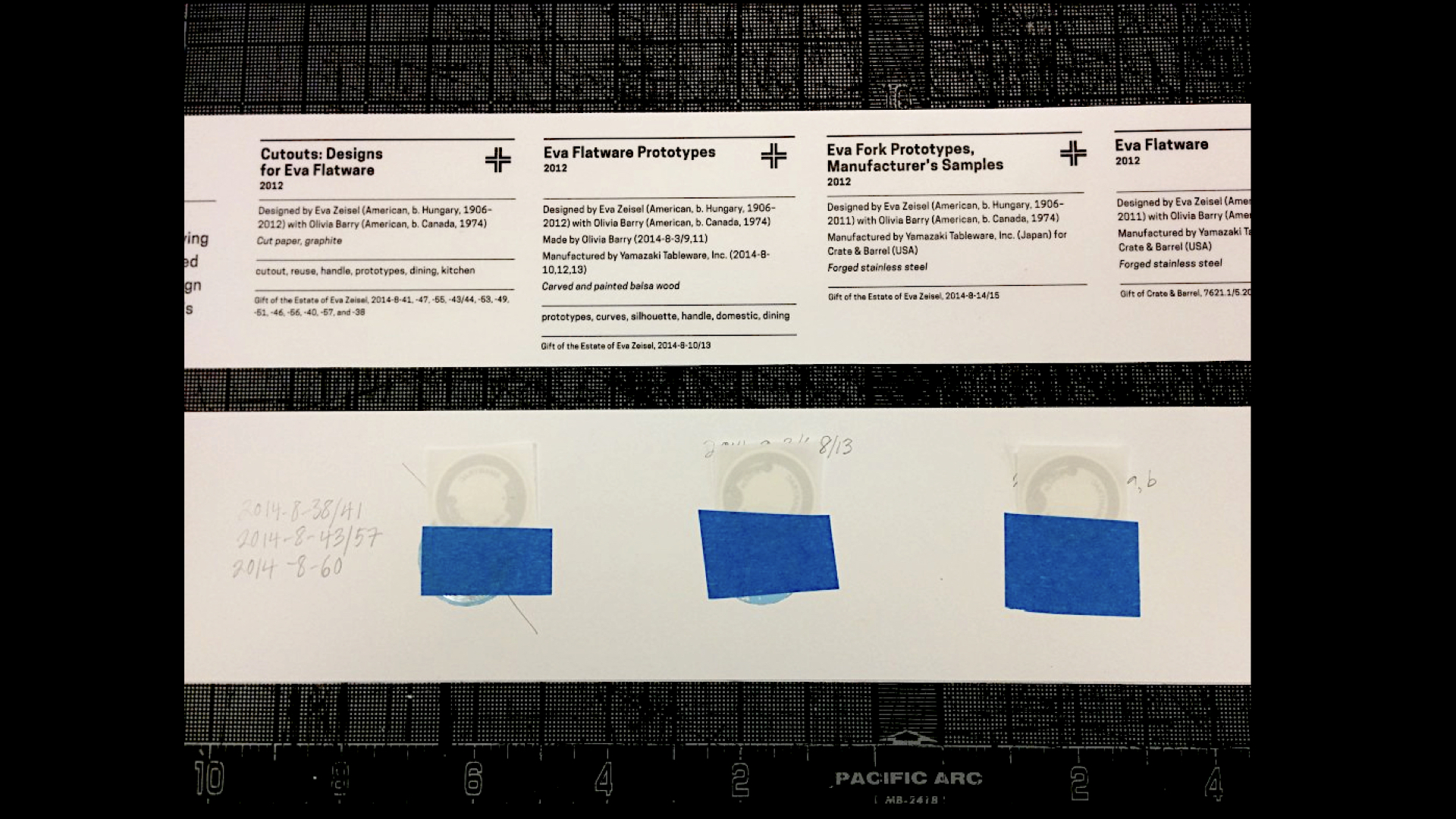
Curatorial had to choose, and write extra descriptions for, related objects (to those on exhibition) to be included on the interactive tables. Registration had to make sure the collection management systems were current and up to date in advance of an exhibition opening. Visitor services had to intergrate configuring and handing out Pens when admitting visitors; they also had to deal with returning the Pens, trouble-shooting the Pens and keeping track of when the batteries in the Pens needed to be replaced. Graphic design and the installation teams had to account for the addition and placement of NFC tags on every single wall label. Security had to make sure people didn't steal the Pens.
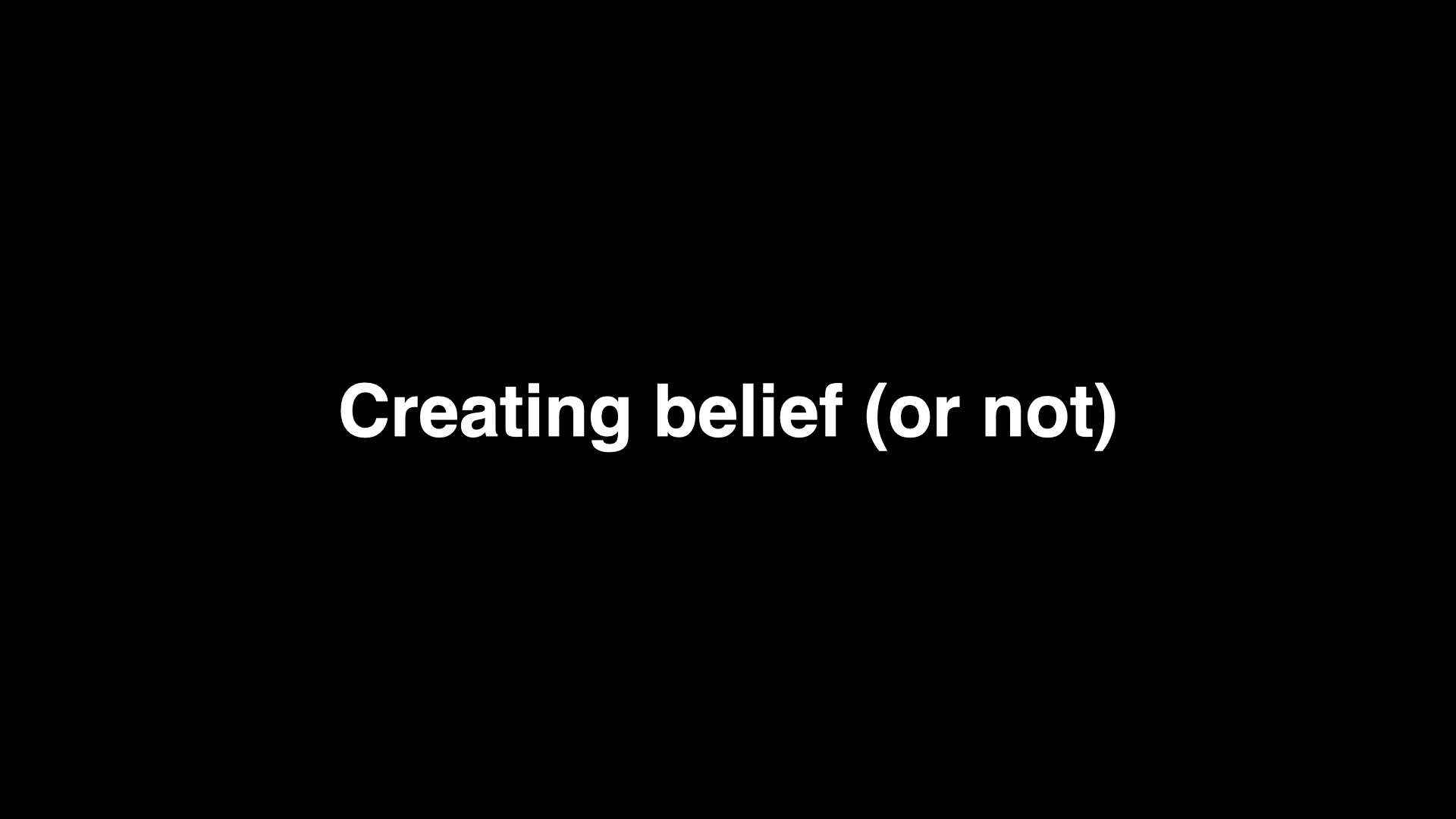
I mention that because I think its important to recognize that we, the team responsible for the Pen, could have done a better job in explaining and helping people manage the changes the Pen was going to produce. We tried, as best we could, but we could have done more. The challenge with a project like the Pen is in trying to create belief in something that may not exist yet.

Perhaps one of the things we should have done was to have produced an equivalent, internally-facing record to mirror the public-facing weblog we published from 2012 to 2016. Nearly everything I've talked about today was written about, in even more detail, as it is being built. We put a high premium on working in public and of discussing the motivating factors behind our choices.
I think we imagined that staff would read the labs.cooperhewitt.org weblog along with everyone else but that never happened, at least not the way we thought it would.

We were asked, many times, why we didn't just build an app
to do everything the Pen did. The really short answer is that it wasn't until five years after the Pen launched that reading NFC tags became common place on iPhones. There were some other reasons to but even if we'd wanted to make an app it would not have been possible given the number of visitors who own iPhones.
Android phones, on the other hand, have been able to read NFC tags since 2012.
It was our intention, sometime after the launch of the Pen, to make the same API methods that the Pen infrastructure used to collect and retrieve objects associated with a visit available to the general public. We want to do this specifically to make it possible for external developers to write Pen-like applications for people's mobile devices. One of the many lessons learned with the Pen is that we should have done this sooner. We didn't and then a whole bunch of organizational intertia and other dynamics began to press on the Pen and those APIs were never opened up.
Fast forward to 2020 when NFC readers, and their corresponding APIs, finally became available in low to mid-range iPhones. I got my hands on one of those phones and decided to see what a phone-based Pen equivalent would look like. Here's a video demonstrating the basic interactions.
One of the things this experiment showed me is that it's not at all obvious where the NFC reader is located on a phone and that it needs to be placed in a very deliberate manner over an NFC tag. At Cooper Hewitt we spent a lot of time thinking about how to make touching a wall label with a Pen an action that, once learned, you wouldn't notice. We spent a lot of time thinking about how to minimize the amount that a person's wrist would need to bend in order to position the Pen in a way that it could read an NFC tag, many of which were mounted flat on the wall rather than angled on a rail.
If a person is forced to repeatedly bend their wrists it very quickly becomes distracting and eventually painful. I am reasonable confident that we would not have been able to control any of these issues with an app-based Pen device and that the uptake and usage would have been pretty low as a result.
Eventually I expanded that Pen-app experiment to scan wall labels from other collections. Here's me collecting a mocked-up William the hippopotamus from the Metropolitan Museum of Art's collection. In the previous example, the application was fetching data about an object from the Cooper Hewitt's API. In this example the application is fetching data from a local database of information derived from the Met's OpenAccess collection data, stored on the phone.
Android phones have always outpaced their iPhone-equivalents when it commes to publicly available NFC or RFID features. For example it is possible to write an Android application that makes a phone behave as though it were an NFC tag. That means it's possible to write an application that re-assigns the value of the NFC tag it publishes dynamically using data stored locally or over the network. It means that any manner in which an Android phone is able to receive or sense
data can be used to automatically update the NFC tag
it is pretending to be.
To illustrate this idea I wrote the dumbest application ever called NFC Clock. As you might guess from the name the application updates the value of an NFC tag that it is broadcasting
every second with the current date and time.
The reason any of this is interesting to me is that this Android phone cost a little more than two hundred dollars. That's probably still too expensive to make it practical to replace traditional wall labels, with or without embedded NFC tags as was the case at Cooper Hewitt, but when you think about the time and cost required to produce them (traditional wall labels) it feels like something that will become affordable sooner than we image.
The phones shown in the video have been placed one on top of the other to account for the very time-consuming challenges of getting any two consumer-grade devices to line up their respective NFC components so that they might successfully communicate with one another. That's just one of number of outstanding issues for this work not to mention the challenge of keeping all the batteries in those all those phones charged. But it points in the direction of what could be possible, as electronics continue to be miniaturized and commoditized. In the same way that the Pen was meant to serve as a springboard for future, as-yet unimagined, interactions so too might a low-cost and network-enabled wall label with excess computing power and a screen.

An interesting wrinkle in all of this, for me, is that none of these examples would work at SFO Museum. Nearly all of the object-specific signage for our exhibitions is six inches behind glass and often at an angle. That's too far away for NFC-based technologies, whether it's the Pen or an app, to work.
The other wireless technology you hear a lot about, especially in museum circles, is Bluetooth. Specifically low-energy Bluetooth beacons which do little more than broadcast a value, that has been assigned by its owner, to nearby Bluetooth receivers. These beacons are designed to use as little power as possible allowing them stay charged for months, sometimes years.
Bluetooth beacons have been notoriously complicated to set up and maintain, rarely as reliable as they claim to be and can quickly become prohibitively expensive. But it is also the case that mobile phones can act as de-facto beacons. Building off the experience of the NFC Clock application I modified the existing Pen-like mobile application to optionally scan for Bluetooth messages, in this case from the phone sitting next to it, in addition to NFC tags.
This is an imperfect solution for collecting individual objects but, in the case of say SFO Museum, it could be enough to allow people to collect an entire exhibition. Or perhaps we might install a tablet-sized device alongside an exhibition that displayed a carousel of images of each object on display broadcasting that object's ID along the way.
Are there perhaps better, more intuitive ways, for passengers to collect a whole exhibition? Absolutely. The point of this application was to try and understand the state of commercially available technologies that could serve as a way for the museum's activities to be present and participate with a network of devices belonging to passengers traveling through the airport.
What are the opportunities that those conditions afford the museum? What are the expectations that those conditions would prompt from passengers?

About once a month, during the time that Pen was being imagined, the digital team at Cooper Hewitt would spend a morning asking ourselves: What will we do if the Pen doesn't work? This is a good exercise for any project. Given the challenges of manufacturing custom electronic hardware it was always possible the Pen would fail but, regardless of that outcome, the museum would still re-open. If the purpose of the Pen was to allow people to remember their visits how would we do that without the Pen?
We used to say that the Pen would allow people to stop taking pictures of wall labels in museums. Taking pictures of wall labels was, and still is, the original Pen-like activity: A way to record something you've seen for future recall. The problem with those pictures is that they exist in a vacuum. Once recorded they are simply pixels in a larger catalog of pixels with no good way to organize or query any of the data contained in that picture.

What if there were a way to extract the meaning, or at the very least, an identifier that pointed to meaning from a picture of a wall label? What if you could upload a photo to a server and then use optical character recognition software and pattern matching to pick out an accession number from the text in a label? If that were possible that same server could query a database for information about that object and then use that information to perform a higher-order process: Save the object to a visitor's account, display an essay about that object, and so on.
The idea was that a visitor could take action, in this case photographing a wall label, that when paired with a digital infrastructure operated by the museum would produce something more useful than the product of the action alone.
We built a prototype application called Label Whisperer that worked in ideal conditions where ideal conditions
meant photos were taken in good lighting with label text centered and not at an angle. In practice, photos taken during a museum visit happen in poor to low lighting conditions and at funny angles because of the placement of labels or the number of people crowding them. In 2014 we could see the outlines of what might possible but the technological means were not available to either the museum or its visitors.

Fast forward, again, to 2021 and the nearly all Android and iOS devices now ship with the ability to recognize and extract text from still images. In the last year I've been revisiting the ideas behind the Label Whisperer project with an eye to how they might be put to use at SFO Museum.
These are some screenshots of a simple text messaging application that allows a visitor to photograph a wall label and then automatically insert the text of that label in to a text message. The message is then sent to a phone number we operate which triggers an application to parse the text for accession numbers, find the corresponding object in our collection and send a return (text) message containing a URL to that object on our collection website. We've included enough descriptive metadata, including an image, in the webpage for that object that the phone's message application can display a preview of the object a person has just scanned.
That's all the application does so far but it's easy to imagine more sophisticated functionality built on to of it. The crucial point is that we've made identifying and retrieving the digital record for an object easy, or at least easier than it's been in the past.
Basically any and every digital experience
you can imagine involving a museum collection depends on being able to recognize and distinguish individual objects. Nothing else works unless and until there is a shared understanding of what a person is looking at. The problem is relatively easy to state. The solutions to that problem are harder, in practice, than most people imagine. Hard does not mean impossible though. If we are available to find a common practice to address this problem, that recognizes the technological and budgetary limitations of the cultural heritage sector, then it opens up a whole new set of possibilities for our collections both individually and, no pun intended, collectively.

The text messaging application I just showed could potentially work in any museum, or at least any museums that include accession numbers on their wall labels. The same basic interactions could apply to any museum and the only difference, from museum to museum, would be the logic to recognize and extract accession numbers from a body of text.
This idea led to the creation of the Accession Numbers project. It is a catalog of machine-readable documents, one per museum, that describe the patterns used to identify an accession number. Accession numbers are a rich tapestry, so to speak, with little or no consistency internally let alone between institutions.
These documents are pretty dry if you don't spend time programming computers or thinking about regular expressions (patterns). These aren't documents meant for leisurely contemplation. They are the instruments necessary to make computers perform a specific task (extracting accession numbers) in the service of a higher-order process.
To date there are a few dozen entries and it's been encouraging to see staff at other museums submit definition files for their own institutions. Some day I hope the project will contain definitions for every museum in the world.
Here's an example of an early-stage application that consumes those data files and allows a user to scan label text from different museums and then collect those objects (or more specifically the identifier for an object) to a local database.
This is the Pen but instead of reading NFC tags it uses computer vision and text recognition software to identify an object from a wall label. That means any museum could offer the same Pen-like experience or collecting objects without the need for custom software or expensive and bespoke hardware or, even, the need to change the way that wall labels are produced or installed.
That means, potentially, all museums could offer their visitors the same ability to collect, to remember and revisit, objects in their collections with little to no additional cost.

At least in principle. First of all not all museums include accession numbers on their wall labels. That's easy enough to fix, though. The larger problem is that many, if not most, museums don't provide any way to display a standalone webpage for an object using an accession number. Most museum websites let you search for an object using an accession number but then render a list view where an object might only be one of many results displayed.
Sometimes museums don't, or won't, have webpages for objects they display in their galleries.
This is the case at SFO Museum. This is the case at SFO Museum for majority of objects that, historically, we have displayed in the terminals. These are exhibitions made up of objects on loan from other museums or donors and SFO Museum takes the position that it should not publish references to those objects on any of its websites because that might suggest they are part of our collection. This holds true even for web pages that may not even contain images because of licensing or copyright reasons, but that would only display the same information we already print on our wall labels (and which people are taking pictures of).
I have not been able to convince the museum we should change that position, at least not yet.

I have been spending a lot of time talking about the importance and the need for creating stable and permanent references for collection objects. And when I say references
what I mean are web pages with URLs (identifiers) that don't change. Web pages that can be viewed by humans and that have enough structure so that they can be also interpreted by machines and computer programs.
These web pages may not, in and of themselves, be terribly interesting. Their value comes from being, in very real and practical terms, the means by which more people than has even been possible can operate and participate in an expanding network of web pages. This network of documents can, in turn, function as a kind shared, collective storage and retrieval system which can be used to produce higher order processes. The web is thirty years old now and we largely take it for granted but I think it is important that we remember what a big deal it was when Tim Berners Lee first shared it with the world. There are two notable aspects about the web that distinguish it:
The first is that it found a sweet-spot between the functionality it offered and the skill necessary to participate, whether that is writing a web page or writing a web server or even a web browser. Web technologies have gotten exponentially more sophisticated and complex over the years but the basics – a network of linkable documents with degrees of graphic design elements – remains simple enough that implementing them doesn't need to seem like an impossibility. The second is that the web was released unencumbered from any licensing. If it's hard to appreciate why these things are important consider two constrasts, one from the recent past and one from the near future.
In the past, before the web, the principal means that a museum had to share its collection beyond the confines of its galleries were books. Those books were expensive to produce and to store and their reach was always limited by the economic and editorial constraints of publishers and distributors. In the near future, we are told, the web will be replaced by some form of virtual, mixed or augmented reality.
The possibilities of these technologies are fascinating to be sure but it is important to recognize that they depend on infrastructures and operational capabilities which only a handful of companies are able to afford and sustain. These are for-profit companies whose decisions are guided by economic and share-holder concerns which means that in the final analysis they will always remain walled gardens. If we adopt these new technologies uncritically we will have, effectively, replaced the web with a fancier and more sophisticated system of economic and editorial chokepoints that came to define the systems which pre-dated the web.
The web is the means by which the cultural heritage sector might pursue its mission not entirely divorced from economic constaints but divorced from economic constraints imposed on it by external actors. The web embodies principles of openness and portability and access that best align with the needs, and frankly the purpose, of the cultural heritage sector. The web is the instrument that makes these things possible in ways that did not exist before the web and we should make an effort to remember, cherish and nuture that fact, even if it is 30 years old.

The web provides the ability to project an idea beyond the range of any ones individual's voice, beyond the limitations imposed by physical geographies. That's a big deal. That is an ability that, before the web, was reserved to a minority of people. The ability for an individual or a group to publish something that is within the reach everyone else on the rest of the planet is genuinely novel.
In recent years I think we have confused the value of simply being able to share ideas more broadly with the immediacy with which those ideas are, or are not, rewarded. There is a belief that if something isn't immediately successful, or more specifically popular, then it was a waste of time and a failure.

I think that's a terrible argument on first principles since it ignores the reality that lots of good ideas weren't understood or accepted in their time. History is littered with ideas that only upon reflection were understood to be valuable. It also deliberately ignores another distinguishing aspect of the web which is that web, by its design, makes it possible to find and retrieve an idea that someone has published days, weeks or years later and to have the means to do so independent of someone else's business model.
It has always been possible to gate access to stuff published on the web with time-based or economic restrictions but these are limitations which are layered on top of the web and not a fundamental property of how the web operates.
It has not always been possible to both store and retrieve the volume of stories and ideas, or even just lists of facts, that a global network of documents (web pages) enables accessible at a global scale. Or rather, if it was possible before the web it was only possible within the boundaries of a vendor's proprietary and for-profit walled garden.
I believe that's an important consideration if the goal of the cultural heritage sector is to extend the reach and make accessible the things we deem important enough to preserve.
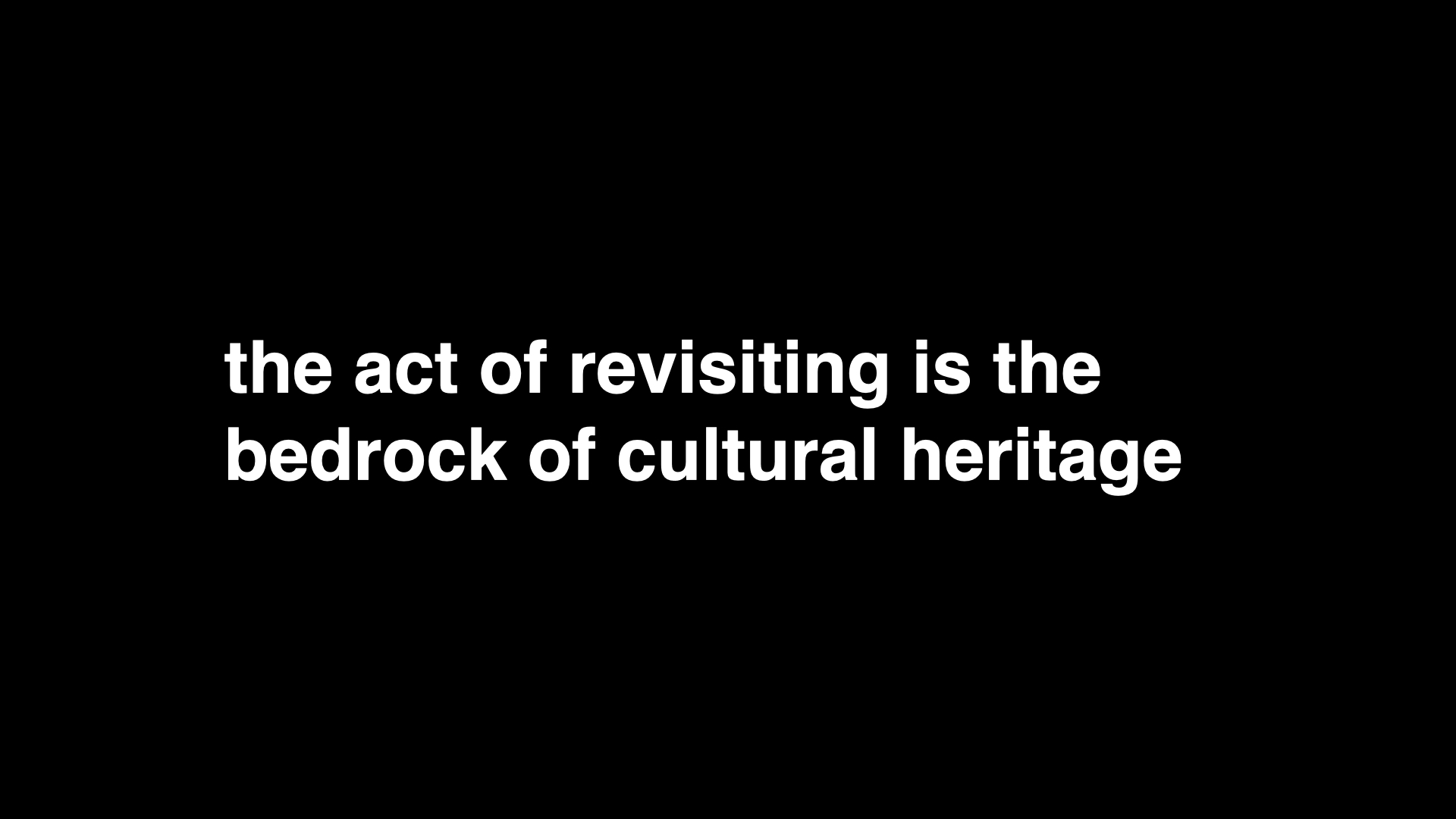
One of the reasons I think these considerations are so important to the cultural heritage sector is that the act of revisiting is the bedrock underlying the whole idea of cultural heritage itself. The act of re-reading a book, or re-listening to a piece of music or of going to see the same painting or sculpture again and again and of celebrating the evolution of an understanding about those works is what separates cultural heritage from entertainment. Entertainment, born of the moment, can and does become cultural heritage but it is precisely through the act of revisiting that one becomes the other.
The web simply makes those acts of revisiting possible for more people, in more ways, than ever before. When I say these things are possible
I mean that the economics of participating in this global network of documents are within the reach of, if not everyone, then more people than ever before. These things become possible because technologies underlying the web are simple enough to meaningfully lower the barrier to paricipation and unburdened by licensing in a way which allows people to share their work and for others still to extend that work to meet their needs.

I've talked a lot about the need to ensure that every object in a museum collection has a web page; that every object has a stable referent within a larger network of documents that can be reliably accessed, by humans and machines both, over time. I have tried to demonstrate that this is the foundational work which best enables the conditions, technologically and economically, for richer and more sophisticated experiences
about our collections.
There is a legitimate critique of projects like the Pen which says that stable identifiers, persistent web pages and a catalog of bookmarks are not enough, that they do not offer a compelling narrative that conveys the meaning and nuance of a collection. I wholeheartedly agree with this argument but I think it depends on two interlocking issues which need to be addressed in order to do so.
The first is ensuring (often creating) the conditions, technologically and economically, which enable those stories to be told and, more importantly, to be retold in a variety of ways. Magaret MacMillan's quote that the past keeps changing because we keep asking different questions of it
bears repeating. The ability to ask new questions of our collections, without the need for another multi-million dollar, multi-year capital project, should be the measure of the technologies we adopt and deploy. I believe that embracing and promoting the web, an open and shared network of linked documents with stable references, is the best way to do that.
The second involves actually retelling, or revisiting, that work and using the objects to craft narratives which are greater than the sum of their parts. That hasn't really happened yet. It absolutely should. The fact that, collectively, the sector hasn't been able to do that work yet suggests to me that the sector actually has no experience doing the things we say we should be doing.
Exhibitions remain, by and large, fire and forget
style endeavours. A lot of time and effort goes in to producing an exhibition but once that exhibition has launched it is, effectively, frozen in amber. Rarely, if ever, does a museum revisit or reconsider or even reference past exhibitions. To the extent that there is additional programming – lectures, tours, blog posts – about an exhibition they typically only happen during the window of time that an exhibition is on display. To the extent that an exhibition is remembered at all it is remembered in the form of a printed book.
This a kind of institutional muscle memory than I believe we should work to overcome, precisely so that we might better craft stories and meaning around our collections. If you accept my argument that the technologies our visitors now take for granted have forever changed their expectations of what is, or should be, possible then ultimately we must do these things.
Tools like the Pen or initiatives like the Accession Numbers project, while interesting from a technological perspective, are not sufficient in and of themselves. Rather they are efforts to try and solve the mechnical problems of bridging the physical world of our collections and our buildings to the larger network of linked documents we call the web and to do so within the economic and staffing realities of the cultural heritage sector.
The point of these projects is to create conditions where both the projects themselves and the stories they are meant to produce might be revisited. I sometimes talk about the need for the cultural heritage sector to design for patience
in the work it does. It is true that books and printed material remain the most durable means for an idea to outlast people's reluctance; to be revisited. I am not here to suggest we replace that practice but to point out we have at our disposal a way to supplement and extend it at a scale that previously was practically impossible if not also unimaginable.
If Piketty was able to craft his arguments about wealth and income inequality from 200 years of tax records, which let's agree are not compelling reading for most people, what might be created from our collective works of cultural heritage
were they afforded not only the same degree of persistance but also retrievability? Given that the means to do so are within our reach now why wouldn't we embrace them?
This blog post is full of links.
#usf